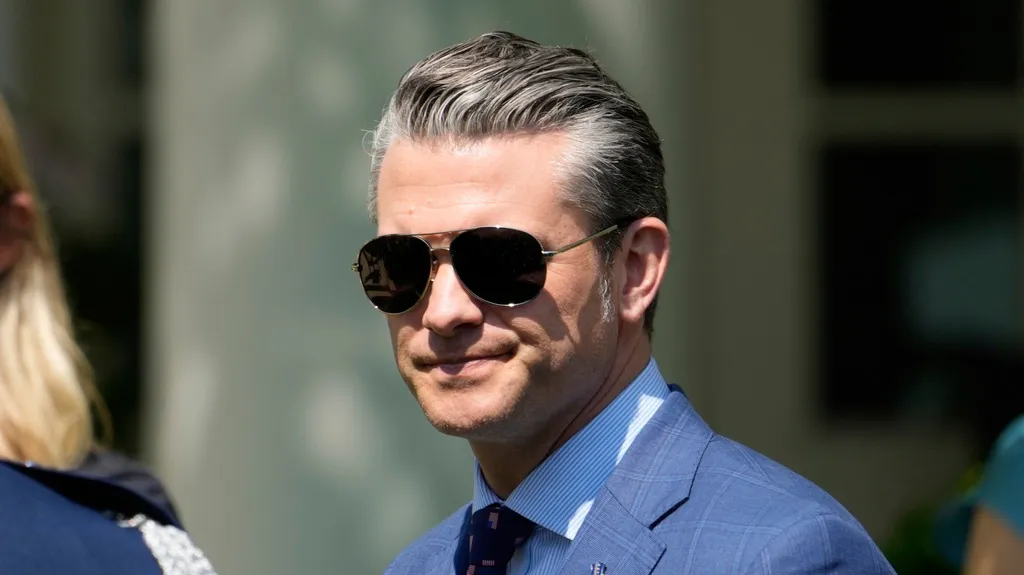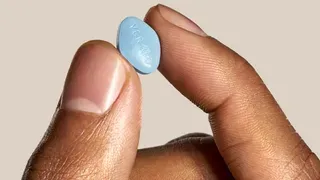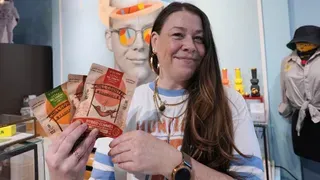April 10, 2011
College Athlete Comes Out, Finds Acceptance From Others & Himself
Steve Weinstein READ TIME: 8 MIN.
Austin Hendrix thought he would be free once he got to college.
There would be no more hiding the fact he's gay, no more denying something that is as much a part of him as the color of his eyes. He could be himself, not the muted version he'd been presenting to the world, to his friends and his teammates in Eastern Michigan's track and cross-country programs.
That was the plan, anyway.
"I was new here. I didn't know anyone on the team, I didn't know anyone on the campus at all. So nobody knew that I was gay," said Hendrix, whose wiry frame immediately pegs him as a distance runner. "I had to make the decision on whether or not to confide in my teammates, coach, classmates, whatever, that I was gay and tell them my sexuality, or just keep it a secret.
"You want to fit in, you want to have your teammates' respect. And a lot of people are ashamed to come out because they think their teammates will think less of them."
For Hendrix, his choice of school ratcheted up the stakes. Eastern Michigan is a Mid-American Conference powerhouse in running, with 34 titles in track and another 15 in cross country. It has produced two Olympic gold medalists. The last thing Hendrix wanted was to cause tension or awkwardness in the locker room, or turn teammates against each other.
Or turn them all against him.
That nightmare scenario would be even worse in distance running, the purest, most primal of sports. There are no scrimmages or fancy drills during base training, just mileage - lots of it. Hendrix and his teammates spend one, sometimes two hours a day running through the neighborhoods and parks around Eastern Michigan, nothing to break up the monotony of their workouts besides sharing bits and pieces of their lives.
So Hendrix stepped back into the closet.
Only now it felt more like a prison.
He would remain trapped there for two long years, until his courage overcame his fear - and he discovered there'd been no reason to hide.
"You can't say that you can just forget about your sexuality. It's who you are. You're attracted to certain people," Hendrix said. "My first two years here, I thought about 'How can I come out? When should I come out?'
"Honestly, my thoughts were consumed by hiding my sexuality."
Hendrix is hardly the first athlete to face such a quandary. What makes him unusual is his willingness to talk about it.
For all of the progress gays and lesbians have made in America, from the legalization of gay marriage in five states and the District of Columbia to the repeal of the military's "don't ask, don't tell" policy in December, the sports world in the U.S. and abroad remains firmly closeted. Not because there are no gay or lesbian athletes, but because of the unwritten prohibition on talking about sexual orientation in sports.
The few high-profile athletes who are out have mostly been women such as Martina Navratilova in tennis, Sheryl Swoopes in the WNBA and Rosie Jones of the LPGA. Europe has seven nations where gay marriage is legal, but just two big-name male athletes who have come out: Gareth Thomas, the former Wales rugby captain, in 2009, and English cricket player Steve Davies, who announced in February he is gay.
There has yet to be an openly gay player in Major League Baseball, the NBA or NFL, and only a few have spoken publicly about their sexuality after retiring.
"You're supposed to fit this model - if you're a gay male, you're (considered) feminine, you can't be athletic," Hendrix said. "You start thinking, 'Maybe I'm the only one. I don't have anyone to look up to, maybe there's something wrong with me.' It does make it difficult. And you're surrounded by all straight men or women so you don't have anyone to really go to or confide in.
"It would just really help to know you're not alone. I think that's what it comes down to."
Hendrix, a 21-year-old fourth-year junior at Eastern Michigan, has been an athlete as far back as he can remember. He comes from a soccer family, and began playing when he was in kindergarten. He took up cross country in middle school because his friends were doing it, and realized after running track his freshman year in high school that he was pretty good.
He began coming out his junior year of high school by telling his friends, and word eventually reached his mother. Their conversation was teary but loving. Finding the words to tell his father was even more difficult and, after talking it over with his mom, Hendrix settled for a letter.
Though accepting of him, his parents were fearful of how their community would treat their only son. Their hometown of Sylvania, Ohio, is small, less than 20,000 people, and word of mouth travels fast.
"The reality is, anybody who thinks an out or gay athlete, even a very talented one at the high school level, has an equal chance of getting a scholarship at the right school or has an equal chance of getting drafted as a straight athlete are still kidding themselves," said John Amaechi, who came out after five years in the NBA with Cleveland, Orlando and Utah. "There are some people who will overlook it. But there are still some owners who are stale, male and pale, and for them, the idea of women being in the locker room is terrifying, let alone a gay person on their team."
Fear of such attitudes persuaded Hendrix to stay silent, and he buried himself in his classes and running. But he learned quickly that a half-truth is just another word for a lie.
Hendrix didn't know a day without fearing someone had found out or was about to. His running suffered and his body did, too, with an uncharacteristic string of injuries. Frustration and disappointment turned inward, gnawing away until Hendrix acknowledged the real problem.
"I got fed up with lying and hiding," he said.
No matter the reaction, it had to be better than pretending.
Two years ago, as he and his best friend on the team talked about accepting people despite their differences, Hendrix finally shared his secret. Though surprised, the teammate said it didn't change anything. That unconditional support gave Hendrix the courage to tell a few other teammates. And then a few more until the whole squad knew.
His straight roommate, James Hughes, thinks he found out on a run, but isn't quite sure of the details anymore because it was such a nonevent.
"It surprised me when I first learned it," Hughes said. "I never expected it, I didn't see it coming. And then, instantly, all I could think about was, 'I hope I never said anything to offend him.'"
All those months - years, really - of anxiety and trepidation, and no one cared. The ridicule and hatred Hendrix feared never materialized. The tight-knit squad didn't disintegrate.
Turns out, acceptance comes a lot easier when teammates already know who you are. When you're the guy who helped keep the pace during that 10-mile, lung-busting run, the guy who's shared those long bus rides to meets, the guy who has the same winged 'E' tattoo, the guy whose points helped your team win the conference title.
"You really know somebody when you're out there running with them over an hour a day, two hours a day at times. You get to know every little thing about them," Hughes said. "If someday they come out and say, 'OK, I'm gay,' it's like OK. It doesn't change anything. I think all athletes can relate to that. They're practicing, they're on the court, they're on the field. It shouldn't change anything if they're really friends and good teammates."
Finally liberated from the weight of all those secrets, Hendrix found every aspect of his life improved.
He was Eastern Michigan's third-best runner at the Mid-American cross country championships last fall, finishing 15th overall as the Eagles won their 15th conference title. His third-place finish in the 1,500 meters last spring helped Eastern Michigan win its 21st MAC outdoor title. A business major, he made the MAC's All-Academic squad last spring and again in the fall.
"If you go to practice and can feel comfortable, you start feeling better mentally and emotionally. Everything just starts getting better," Hendrix said. "You don't have to worry about, 'Are people thinking this, are people thinking that? Do I have to hide this? What happens if somebody finds out?'
"You can just concentrate on being the best athlete you can be instead of worrying about every other little thing."
Coming out went so smoothly, in fact, that Eastern Michigan coach John Goodridge didn't even know Hendrix was gay until several weeks ago.
Hendrix said he would have gone to Goodridge had he had any serious problems. But he didn't, so why bring it up? After all, straight athletes don't announce their sexual orientation to their coaches.
"Austin is Austin. He's one of the most dedicated, coachable athletes that I've worked with, and it's just been a thrill to see him develop," Goodridge said. "This is not an issue for this team. If it was, I'd have known about it."
That's not to say there haven't been tough moments.
After one particularly good race, a former teammate told Hendrix he was really fast "for one of those gay kids." Hendrix quickly let the teammate know that joking about anyone's sexuality is out of bounds, akin to poking fun at somebody's race.
But Hendrix hasn't encountered outright hatred, from either his teammates or their competition.
"Every runner I've met has been OK with the fact," said Hughes, Hendrix' teammate. "The support is just tremendous."
As fortunate as Hendrix feels for his team's reaction - or lack thereof - he knows it isn't so easy for other gay youngsters, athletes or not.
According to The Trevor Project, a suicide prevention organization, gay, lesbian and bisexual youths are up to four times more likely to attempt suicide than heterosexual youngsters, and a third have tried to kill themselves. In a 2009 survey by the Gay, Lesbian and Straight Education Network, almost 85 percent of gay students in middle and high school said they'd been harassed because of their sexual orientation.
Knowing others have faced the same obstacles can help young athletes struggling with the decision to come out, and Hendrix has shared his story on Outsports.com. He also made a video for the "It Gets Better" project, started last September as a response to the rash of suicides by teens believed to be victims of anti-gay bullying, including a student at Rutgers.
Just as important, though, is the support and acceptance of straight athletes. Eastern Michigan is one of the few schools to have a gay-straight alliance dedicated to athletics, the Student Alliance for Gay Athletes and Allies, and Hendrix is its co-president.
The program is similar to Athlete Ally, started by Hudson Taylor, a three-time All-American wrestler at Maryland who now coaches at Columbia.
"There are thousands of LGBT athletes out there not being made to feel welcome or included in the athletic environment. Straight athletes really have the power and ability to change that," said Taylor, who is straight. "If a few straight athletes ... would stand up and say, 'This language is not OK,' I think that would go a long way to changing the culture of athletics."
Hendrix has experienced that power firsthand.
For many of his teammates, Hendrix is the first gay person they've known. They "bombarded" him with questions when he came out, and still ask his opinion about anything they think is remotely related to homosexuality. When Hendrix bought a pair of running socks with the blue-and-yellow equal sign of the Human Rights Campaign on the ankle, his teammates not only expressed their approval, they wondered if maybe they all should get them, too.
"A lot of them are basing their entire perception of gay people off me and I may not be the best person for that," Hendrix said. "They'll come to me about fashion advice - I'm not the most fashionable gay person in the world. (But) it's nice. It's good that we can have the conversations that we do and not feel awkward about it.
"A lot of them went from having this certain idea about gay individuals to being accepting of it, which was awesome."
Steve Weinstein has been a regular correspondent for the International Herald Tribune, the Advocate, the Village Voice and Out. He has been covering the AIDS crisis since the early '80s, when he began his career. He is the author of "The Q Guide to Fire Island" (Alyson, 2007).





